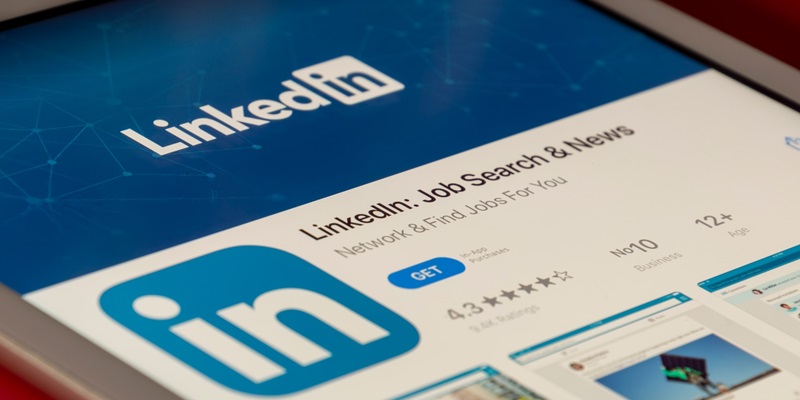LinkedIn has become a powerhouse for professionals looking to connect, network, and create new business opportunities. In this article, we will explore how effectively leveraging organic outreach and paid advertising on LinkedIn can yield substantial lead generation results. With over 700 million users worldwide, this social networking platform provides a unique opportunity for businesses to reach their target audience and nurture valuable professional relationships.
Optimizing Your LinkedIn Profile
To make a memorable impression on LinkedIn, it is crucial to maintain a well-optimized profile. Start by adding a professional photograph that showcases your personality and creates a positive first impression. Additionally, craft a detailed summary that highlights your skills, experience, and achievements to help you stand out from the crowd. Regularly update your profile with your professional journey to keep your connections informed and engaged.
Expanding Your Professional Network
To expand your professional network on LinkedIn, you need to actively engage with the content shared by your connections. By liking, commenting, and sharing relevant content, you can build meaningful relationships and increase your visibility within your industry. Actively participating in discussions and offering valuable insights will establish you as an expert in your field.
Sending personalized connection requests can significantly improve your acceptance rate. Take the time to research and understand the person you want to connect with, and tailor your request accordingly. Personalized connection requests show that you have a genuine interest in connecting, setting the stage for potential collaborations and business opportunities.
Participating in industry-specific groups is an excellent way to broaden your professional network. Actively participate in group discussions, share valuable content, and connect with like-minded professionals. Engaging within these communities can lead to fruitful connections and valuable business relationships.
Leveraging LinkedIn’s Sales Navigator Tool
LinkedIn’s Sales Navigator tool offers advanced search options that enable you to identify and target potential leads more effectively. By refining your search criteria based on specific demographics, job titles, and industry, you can ensure that your outreach efforts reach the right people.
LinkedIn’s Sales Navigator also facilitates personalized InMail strategies, allowing you to send direct, customized messages to potential leads. By personalizing your outreach messages and offering value, you can increase response rates and initiate fruitful conversations.
Understanding your potential leads is crucial for effective outreach. LinkedIn’s Sales Navigator provides comprehensive insights into your target audience, including their activity, interests, and connections. This information allows you to tailor your approach and better understand their needs, improving your chances of generating quality leads.
Content Marketing on LinkedIn
When it comes to content marketing on LinkedIn, providing value is key. Sharing industry updates, relevant news, and insightful articles that showcase your knowledge and expertise will help you engage and retain your audience. By consistently delivering high-quality content, you can position yourself as a trusted authority in your industry, attracting potential leads.
LinkedIn Advertising Formats
LinkedIn offers various ad formats that cater to different objectives. Sponsored content is an effective way to increase brand visibility by promoting your content directly in users’ feeds. InMail ads, on the other hand, enable direct engagement by delivering personalized messages to your target audience.
Creating Brand Awareness Campaigns
To effectively engage the professional audience on LinkedIn, brand awareness campaigns should incorporate compelling storytelling and captivating visuals. Craft your messaging in a way that resonates with your target audience’s aspirations and values. The use of visually appealing images or videos can help grab attention and make a lasting impression.
LinkedIn Ads for Lead Generation
LinkedIn ads designed for lead generation are tailored to attract professionals actively seeking solutions. By including persuasive calls-to-action (CTAs) and integrated lead forms directly within the ad, you can streamline the lead generation process and gather valuable contact information from potential leads.
Combining Organic and Paid Marketing Efforts
The combination of organic and paid marketing on LinkedIn can be particularly powerful. Organic outreach efforts provide insights into your audience’s preferences and behaviors, while paid advertising amplifies your reach and increases brand visibility. By aligning your paid advertising efforts with the insights gained from organic engagement, you can maintain a cohesive and influential brand presence.
Monitoring Performance with LinkedIn Analytics
To gauge the effectiveness of your marketing initiatives on LinkedIn, it is crucial to utilize LinkedIn’s analytics tools. These tools provide vital metrics such as engagement, reach, and conversion rates, allowing you to measure the success of your lead generation efforts. By analyzing these metrics, you can make data-driven decisions and optimize your marketing strategies for better results.
LinkedIn offers immense potential for lead generation through a combination of organic outreach and paid advertising strategies. Optimizing your profile, expanding your professional network, leveraging Sales Navigator, and creating valuable content are all key ingredients for success on this platform. By effectively combining organic and paid marketing efforts and monitoring performance using LinkedIn’s analytics tools, businesses can unlock the full potential of LinkedIn for lead generation. Embrace the power of LinkedIn and pave the way for new business opportunities and professional relationships.

